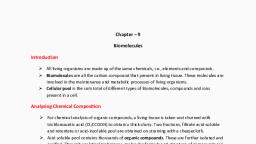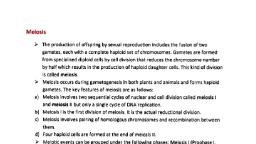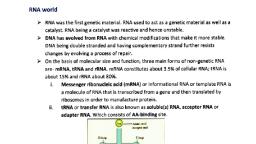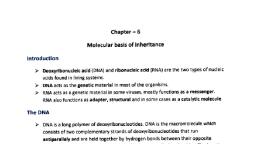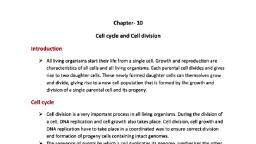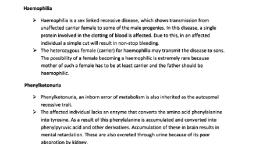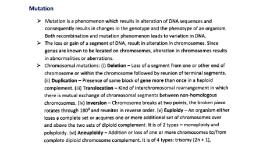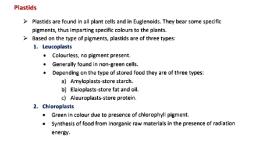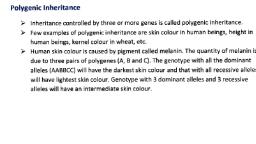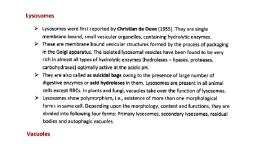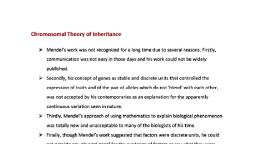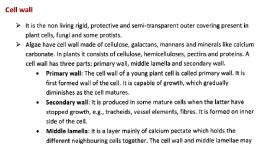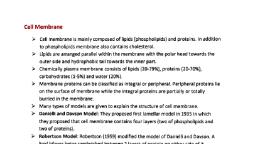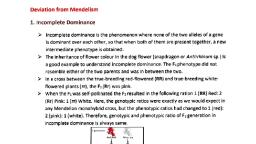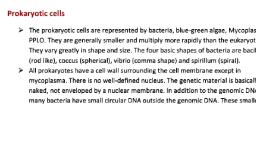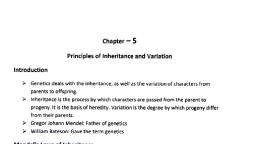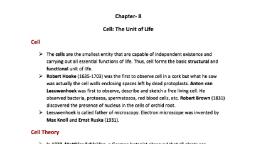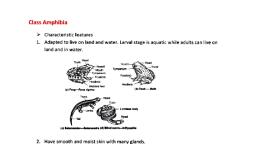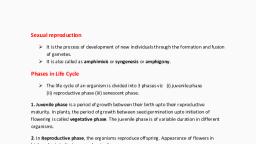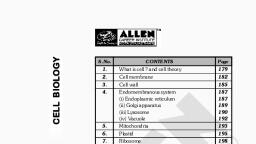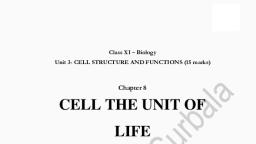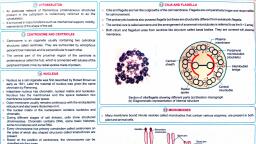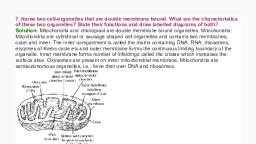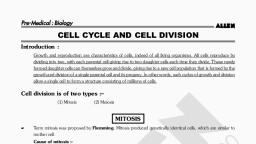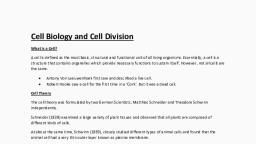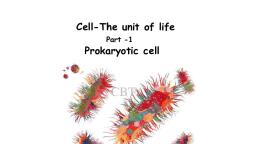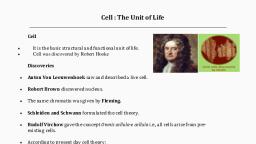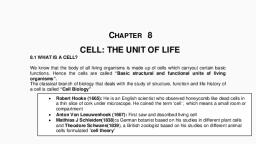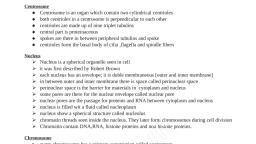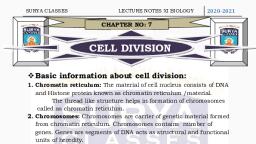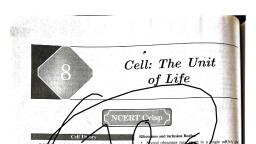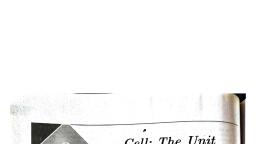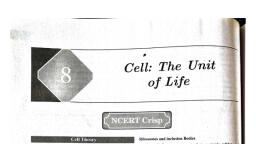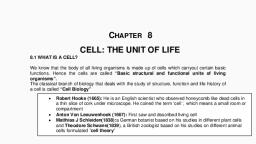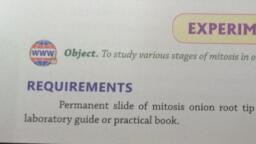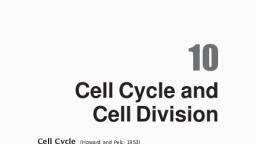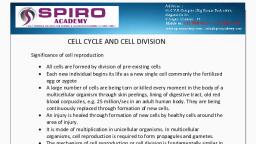Page 1 :
Centrosome and Centrioles, Centrosome is an organelle usually containing two cylindrical structures called, centrioles. The centrioles occur in nearly all animal cells and in motile plant cells,, , such, , as, , zoospores of algae, sperm cells of ferns and motile algae., , They are surrounded by amorphous pericentriolar materials. Both the centrioles in a, Centrosome lie perpendicular to each other in which each has an organisation like, the cartwheel. They are made up of nine evenly spaced peripheral fibrils of tubulin, protein. Each of the peripheral fibril is a triplet. The adjacent triplets are also linked., The central part of the proximal region of the centriole is also proteinaceous and, called the hub, which is connected with tubules of the peripheral triplets by radial, spokes made of protein. The centrioles form the basal body of cilia or flagella, and, spindle fibres that give rise to spindle apparatus during cell division in animal cells., , Nucleus, Nucleus as a cell organelle was first described by Robert Brown in 1831. The material, of the nucleus stained by the basic dyes was given the name chromatin by, , Flemming., The interphase nucleus has highly extended and elaborate nucleoprotein fibres, called chromatin, nuclear matrix and one or more spherical bodies called nucleoli., The nuclear envelope, which consists of two parallel membranes with a space, between called the perinuclear space, forms a barrier between the materials, present inside the nucleus and that of the cytoplasm. The outer membrane usually, remains continuous with the endoplasmic reticulum and also bears ribosomes on it., At a number of places the nuclear envelope is interrupted by minute pores, which, , are formed by the fusion of its two membranes. These nuclear pores are the, , passages through which movement of RNA and protein molecules takes place in, both directions between the nucleus and the cytoplasm. Normally, there is only one, , nucleus per cell, but some organisms are binucleate e.g., Paramecium and some are, multinucleate eg, some fungi and, , algae. Some mature cells even, , lack nucleus, e.g.,, , erythrocytes of many mammals and sieve tube cells of vascular plants., The nuclear matrix or the nucleoplasm contains nucleolus and chromatin. The, nucleoli are spherical structures present in the nucleoplasm. The content of, , nucleolus is continuous with the rest of the nucleoplasm as it is not a membrane
Page 2 :
bound structure. It is a site for active ribosomal RNA synthesis. Larger and more, numerous nucleoli are present in cells actively carrying out protein synthesis., outEA ME, , Nuclear, , w, , Fovelope, sPACE, , Nucleoplasm, , ucNONATIN, , oOMAPN Chromatn, , Nucteolus, , cEAM PO, , Ulrasrture, , nucleus, , The interphase nucleus has a loose and indistinct network of nucleoprotein fibres, called chromatin. But during different stages of cell division, cells show structured, chromosomes. Chromatin contains DNA, some basic proteins called histones, some, non-histone proteins and also RNA. A single human cell has approximately two, metre long thread of DNA distributed among its forty six chromosomes. Every, chromosome essentially has a primary constriction or the centromere on the sides of, which disc shaped structures called kinetochores are present. Centromere holds two, chromatids of a chromosome., Depending upon the position of centromere, chromosomes are of four types:, Telocentric: Centromere terminal in the, , area, , of telomere., , Acrocentric: Centromere is situated inner to telomere., , Sub-metacentric: Centromere occurs slightly away from the middle of, chromosome., Metacentric: Centromere present in the middle of chromosome., , ang w, t, , Ma, , Telm, , Fig.: Types of chromosome on the basis of position of centromere, Sometimes a few chromosomes have non-staining secondary constrictions at a, constant location. This gives the appearance of a small fragment called the satellite., Chromatin is differentiated into two regions euchromatin and heterochromatin., Heterochromatin is genetically inactive, darkly stained and highly condensed region, of chromosome with tightly packed DNA. Euchromatin is genetically active, lightly, , stained and rich in loosely packed DNA. Transcription occurs in euchromatin.

